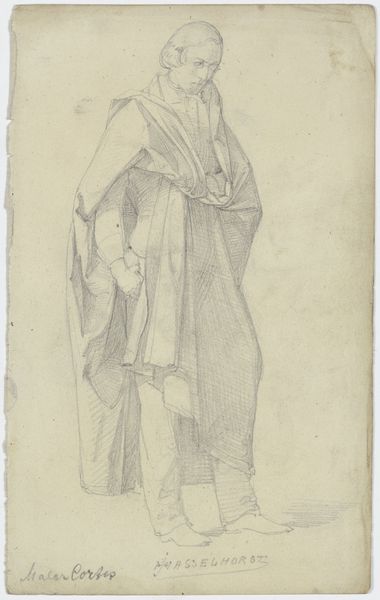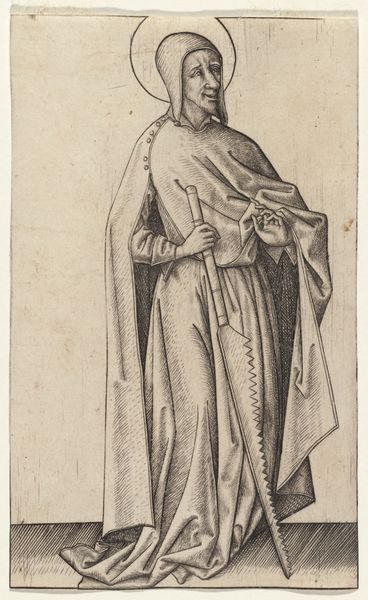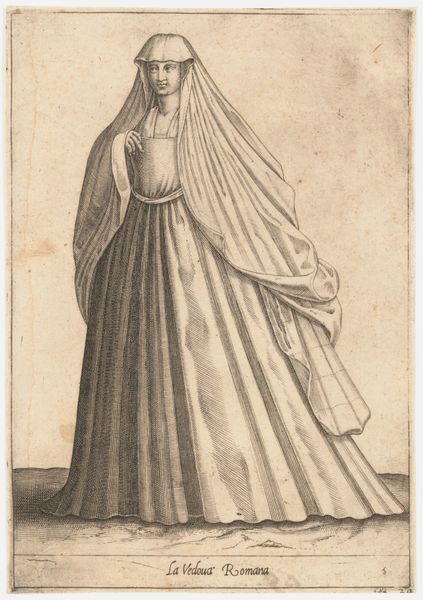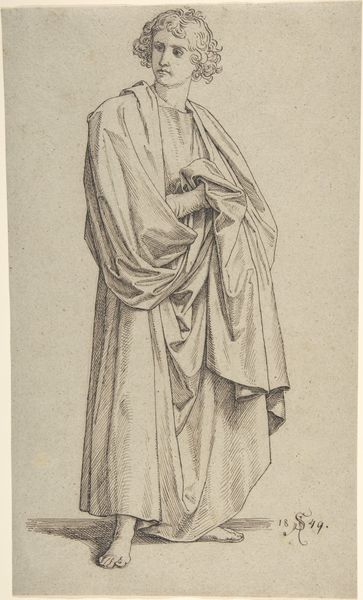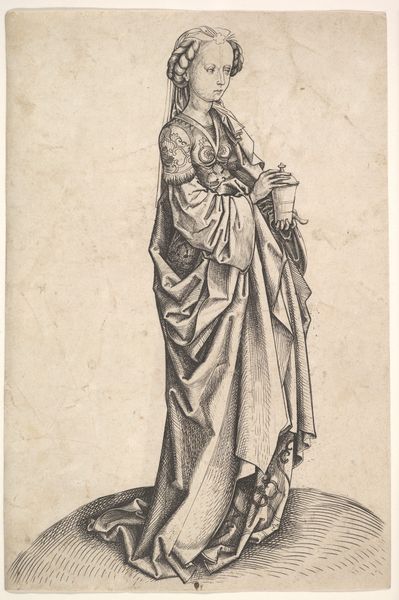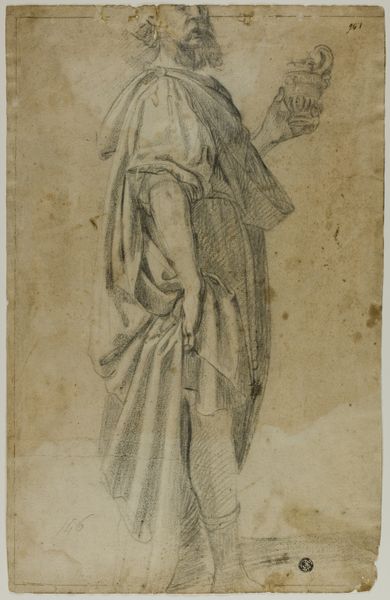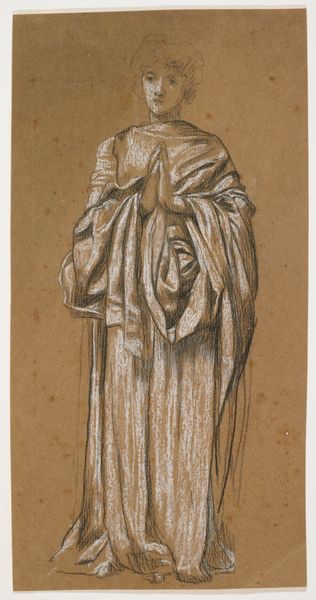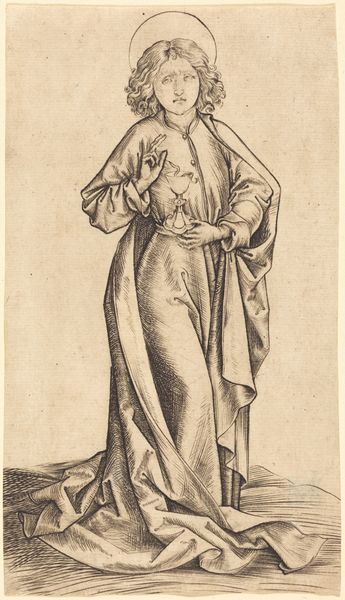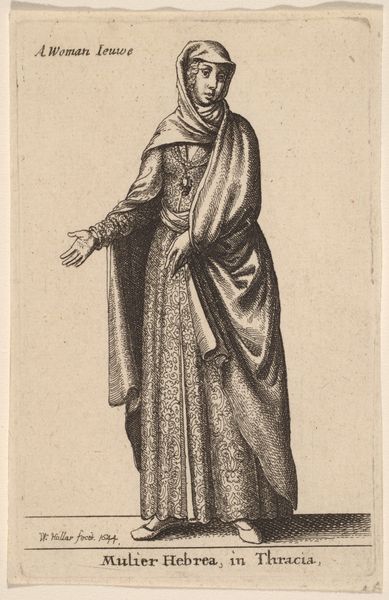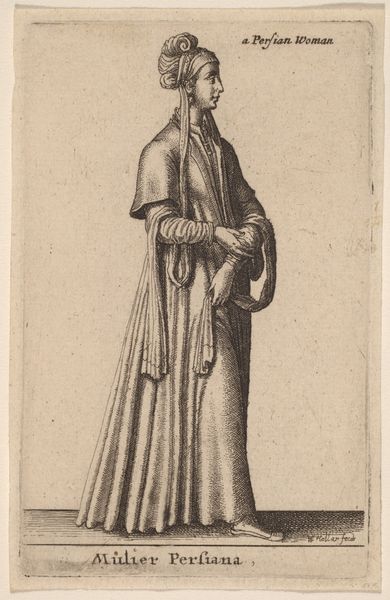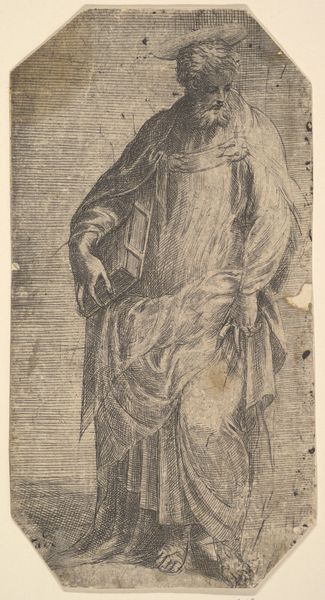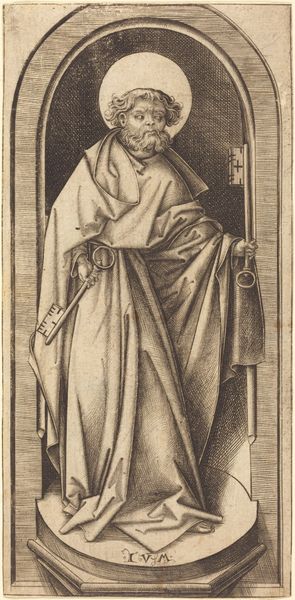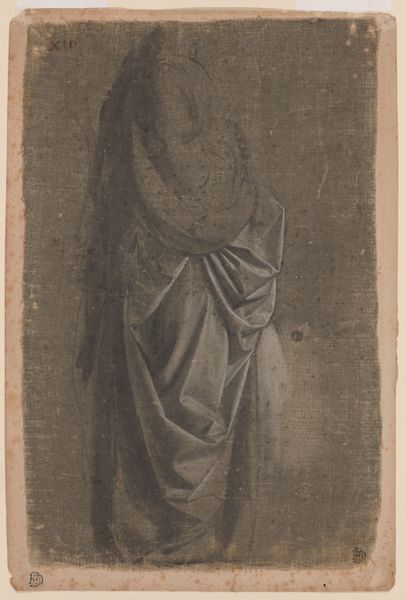
The Apostle Jude ThaddeusFrom the 'Large Standing Apostles ' series c. 1470
0:00
0:00
drawing, print, engraving
#
portrait
#
drawing
#
medieval
# print
#
figuration
#
12_15th-century
#
northern-renaissance
#
engraving
Copyright: Public Domain
Curator: Looking at this print from around 1470 by Israhel van Meckenem, we see "The Apostle Jude Thaddeus," part of a larger series called "Large Standing Apostles," residing here at the Städel Museum. Editor: My first thought is how static the figure feels. The sharp, precise lines of the engraving, particularly in the drapery, almost freeze the apostle in time and space. Curator: Indeed. The level of detail achieved through engraving allows the symbolic language to be particularly clear. Note the club, the instrument of Jude's martyrdom, held prominently. It isn’t just an object; it represents the ultimate sacrifice, a potent emblem readily understood by the contemporary viewer. Editor: And the way the lines are used to suggest volume is fascinating. See how the density of lines shifts to give the folds of the robe a palpable weight and texture? It's a powerful exploration of form through purely linear means. Curator: The halo is significant as well, identifying Jude's holiness and divine status. In Medieval times the halo offered immediate confirmation of the subject’s religious importance and their blessed nature. The Northern Renaissance focus is visible, emphasizing naturalistic human features, which made religious figures more relatable. Editor: Relatable, yet simultaneously distanced by that very rigid frontality. The formal pose combined with the incisive lines lends the apostle a solemn dignity but also an almost unapproachable quality. It speaks to the complexities of representation, trying to balance the divine and the human. Curator: And notice the gaze. Directed slightly away, there is a sense of divine purpose beyond the picture's frame. He is not just a figure, but a vessel, channeling greater spiritual truths to the audience. Editor: From a compositional point of view, it's all quite ingenious. The verticality of the figure dominates, while small details – the textures and geometric forms of the tiled floor – root him in earthly reality. Curator: Yes. The combination of ground tile and heavenly signifiers really encompasses the entire early modern worldview. The artist is operating as both a recorder and interpreter, providing believers with concrete examples for their devotional lives. Editor: Ultimately, this engraving showcases how seemingly simple techniques can create remarkably profound artistic expressions. Its lasting impact on art history can still be seen and appreciated today.
Comments
stadelmuseum about 2 years ago
⋮
This early and extremely rare engraving by Israhel van Meckenem is a copy after the Master ES. Especially in his early phase, Israhel copied a great number of that master’s engravings. The only distinct change he made here was the addition of the apostle’s name in beautifully ornate script. His aim in doing so was probably to make the print better understandable and thus more attractive for the potential buyer.
Join the conversation
Join millions of artists and users on Artera today and experience the ultimate creative platform.
